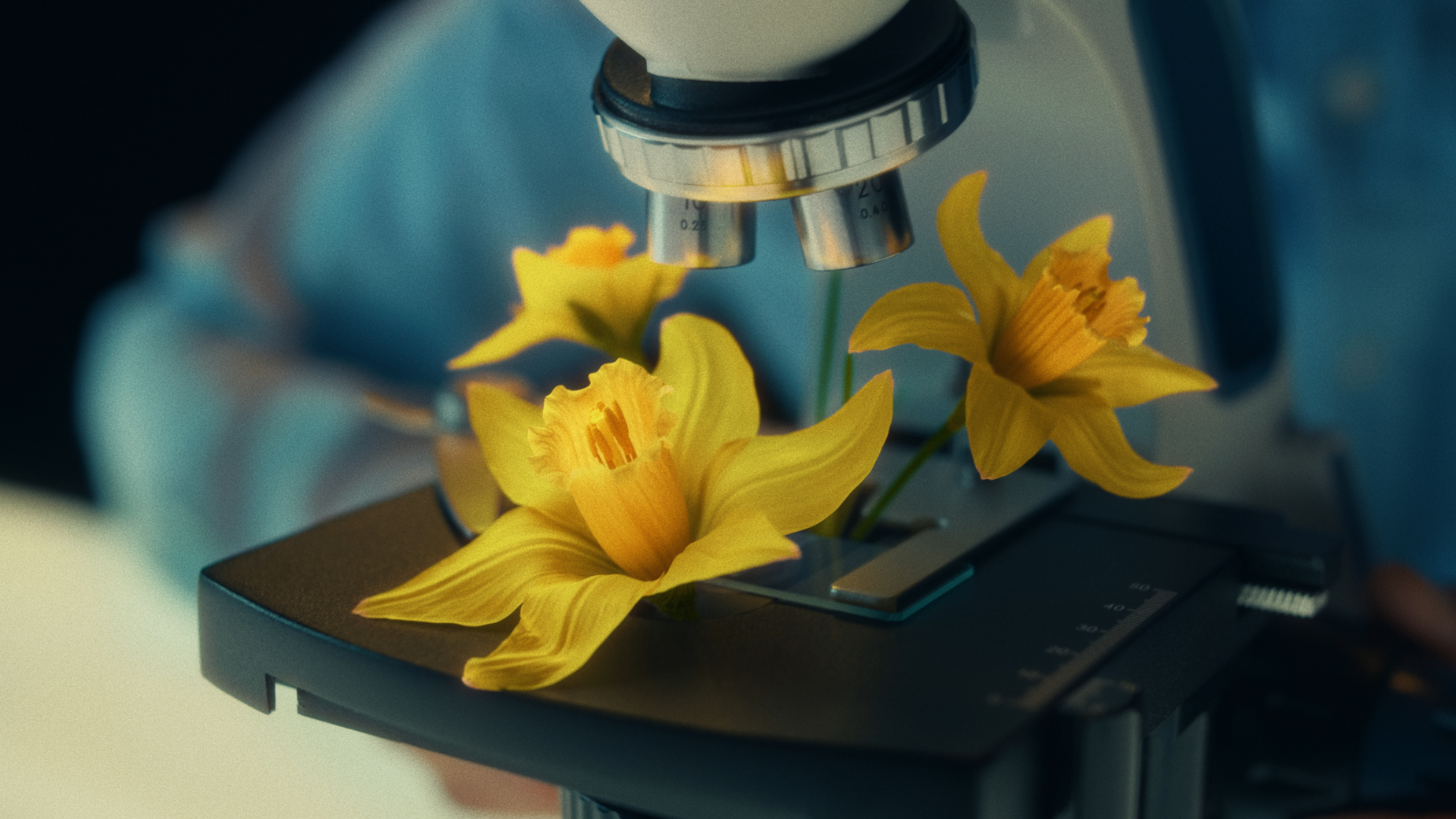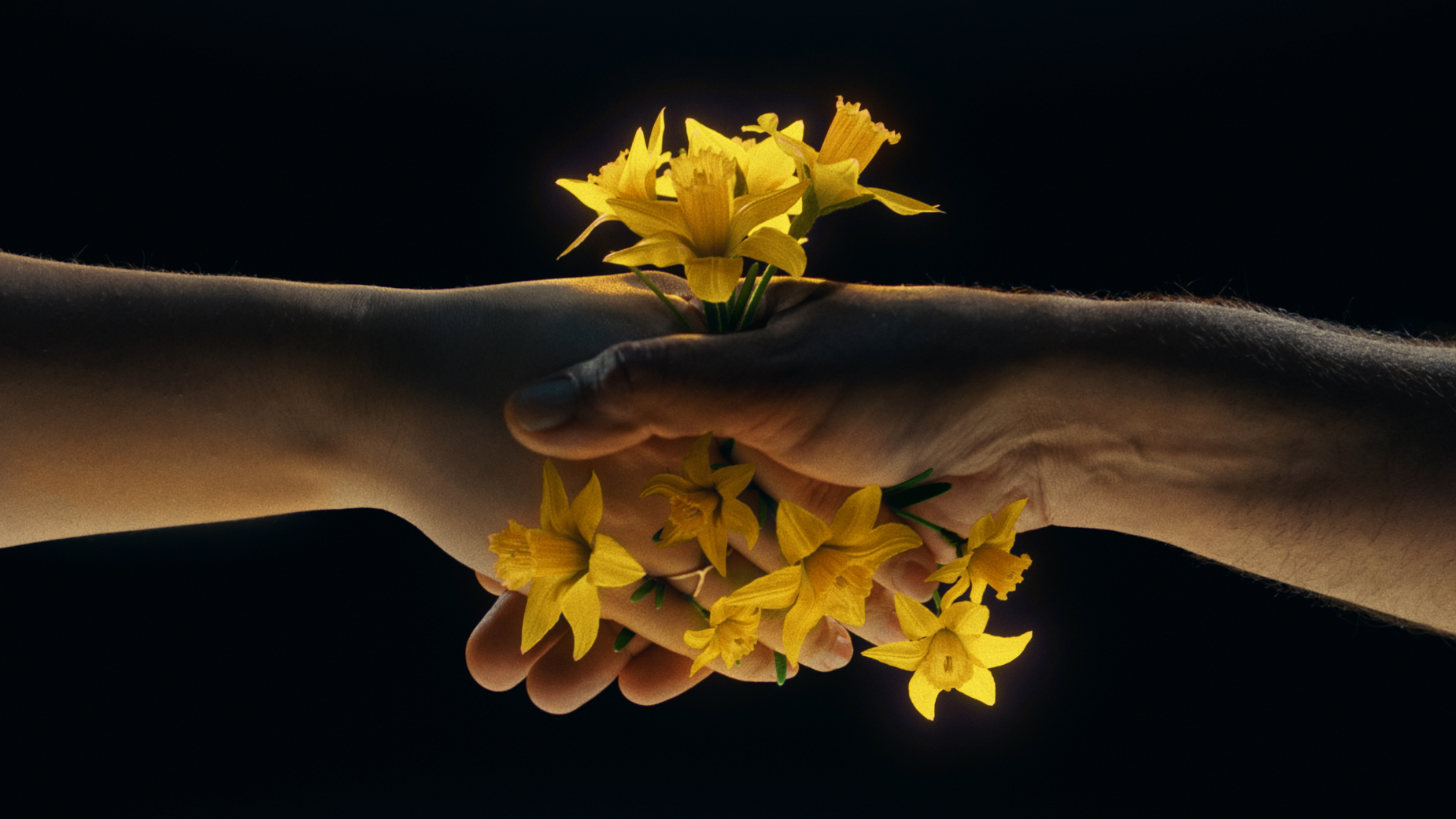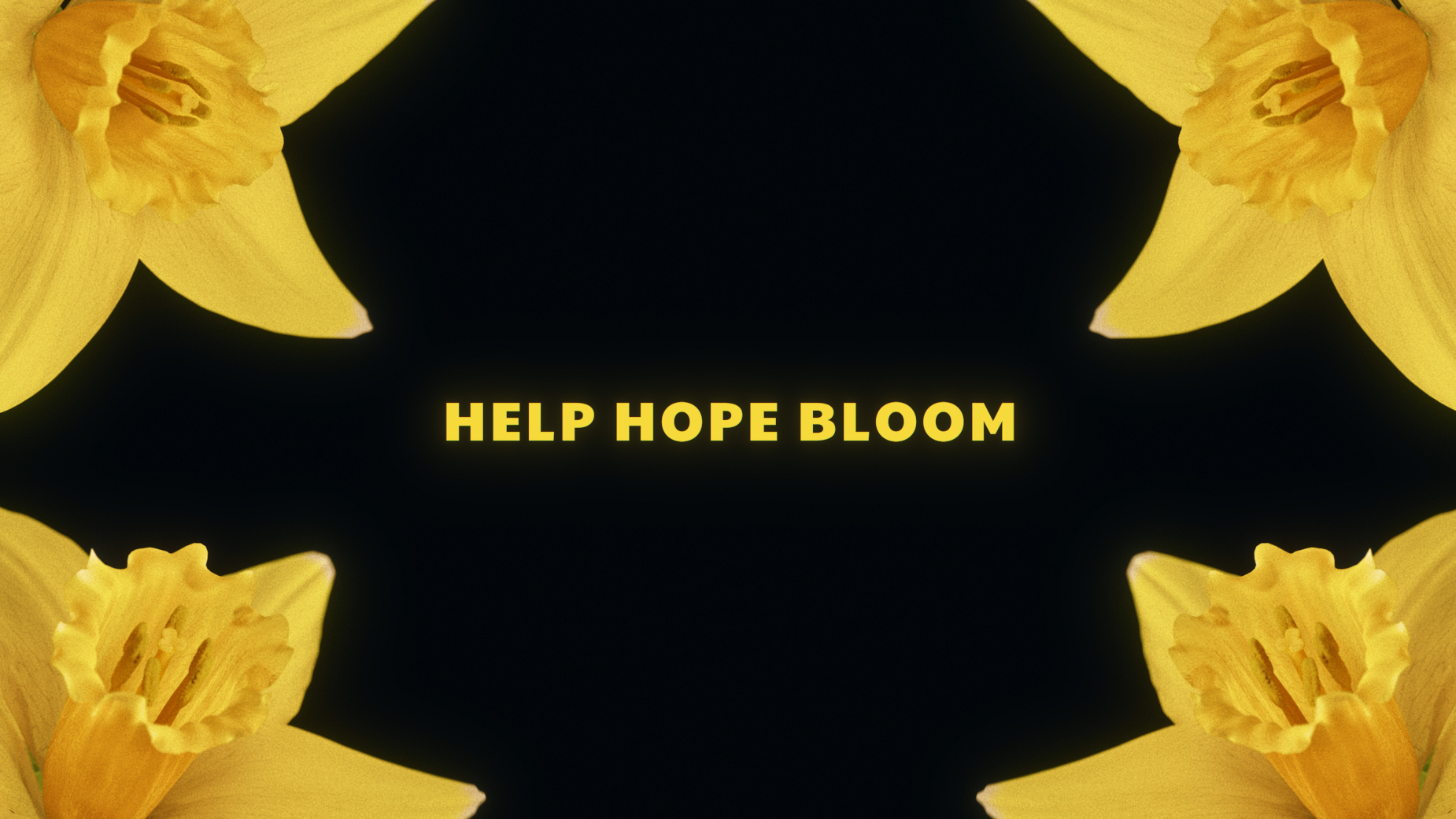
How This Director Celebrated the Canadian Cancer Society with CG Blooming Daffodils

Did you know that nearly half of people in Canada are expected to be diagnosed with cancer within their lifetime? This grim statistic, provided by the Canadian Cancer Society (CCS) is yet another reason why every year, people are invited to donate towards furthering research and support programs… It’s important, it’s relevant, and truly, it can have an impact on anyone.
With all this in mind, CCS has been trying to push back with a tradition over 65 years old: ‘Daffodil Month’. Taking place every April (Cancer Awareness Month), the organisation has positioned the flower as a symbol of hope for those living with the disease, reminding them that people are ready to rally together to ensure they have a real shot at having a tomorrow.
So, with the start of April, it only made sense that a new reminder of this initiative would go out to the public, in this case led by agency Juliet. Created in partnership with the likes of Impossible Studios, Fort York, Outsider Editorial, and Reactiv, which also happens to be the studio of the project’s director, Alon Isocianu, the work represented a coming together of some of the best talents in Canada. Depicting blooming daffodils which were created entirely in CG - no small feat, and quite a tricky process - the hero spot served as a reminder of the importance of hope, while celebrating the lives of researchers, treatment developers, donors, volunteers and, crucially, the patients themselves.
So, to learn more about what it took to not only direct the spot, but to create authentic flowers from scratch, LBB’s Josh Neufeldt sat down with Alon for a chat.
LBB> From the top, what was the brief for this project, and why was this something you were keen to be involved in?
Alon> The folks at Juliet (the ad agency on this project) had shared a script that wasn’t too far off from where we landed conceptually, in that it used the daffodil flower as a symbol for hope. It also called for a series of stylised vignettes shot against a black backdrop, each highlighting a different CCS effort while daffodils bloom and adorn various props and set elements.
When Marco D’Angelo and Jenna Edwards at Impossible first sent me the agency deck, I found myself drawn to the concept and visual possibilities, but perhaps even more so by the cause itself. Cancer obviously impacts so many, and is such a heavy topic. It’s generally hard to talk about it with any sense of optimism. However, the work that CCS does genuinely helps people all across Canada, and so the idea of inspiring hope is something that deeply resonated with me. In an advertising world where we often try to ‘sell hope’ as a way to sell other stuff, this felt different - it felt more genuine.

LBB> Notably, on the pitch, you created some rough mockups to demonstrate that it would be entirely achievable. What was this process like, and technologically, what approach did you intend to take from the get go?
Alon> Yes, I’ve been known to deep dive into 3D mockups in my pitches. This entire campaign felt like it hinged on being able to showcase a realistic, yet ‘wondrous’ daffodil gracefully blooming in real time. I knew almost from the start that the flower would need to be animated in 3D, but I considered some other approaches as well. I thought of either sourcing or capturing time-lapse footage of daffodils blooming and compositing it into our scenes. However, if you’ve ever seen a time-lapse of flowers blooming, it rightfully looks pretty jumpy and shaky because a flower will move and sway over time as it’s growing, and speeding it up accentuates this… so not very graceful.
I also looked into using some AI-assisted workflows to take static renders of a flower and make it bloom, but that technology isn’t quite there yet (and let’s be honest, would have been way less fun to use, and would allow for less control).
For the treatment, I did some static 3D mock-ups myself in Cinema 4D using some pre-existing models of a daffodil, just to see how photoreal I could get it. The mockup in the treatment gave me a little more confidence that it could be done, but I honestly didn’t really know if we could pull it off to the level it needed to be at, until we actually did it. Looking at it now, my mockup looks pretty bad in comparison to what we were able to accomplish in the final spot.
LBB> For storyboarding, how did you build around the idea of blooming daffodils while also ensuring the work balanced the ideas of organic and wondrous?
Alon> Reactiv has a great relationship with Dave Franciosa, who is a wonderful storyboard artist that I work with often. With Dave, I worked on finding ‘realistic’ ways to introduce the daffodils. So, for example, when the three flowers are blooming onto the microscope, we talked about how the stems should come from the grooves/spaces that are physically present in the stage surface of the microscope. And, when we later see the hands being clasped together, I wanted the stems of the daffodils to come from in between the fingers, so we never truly see where the stems originate. In a sense, I wanted to have rules about the physical origin of wherever the daffodils are flowering out of, so that they looked magical while blooming but also maintained an element of realism.


LBB> Moving into the pre-production phase, what was the planning process like? What was your timeline like for the project, and how did this impact your decisions on what had to be live action versus what had to be CG?
Alon> The timeline was fairly tight. We were awarded towards the end of December and had to shoot in the second week of January, with a holiday in between that broke up the prep time.
The post schedule was tight as well, so Reactiv actually started designing the hero CG daffodil right away, before we shot anything. We had planned to then get matching real daffodils on set. We had a few calls with the VFX team at Reactiv and the production team at Impossible, as well as with the agency (and client as well, because they cared a lot about the approach) – to iron out the workflow on set.
We knew that the flowers, as they bloom, would need to be CG, but we thought maybe some of the flowers could be practical once we’d established them growing. However, as we got closer to the shoot, it became more obvious that the real daffodils we had access to weren’t going to match the CG daffodil we had already created, and it was too late to re-design the CG or to find new real daffodils. We also knew that for the CG daffodils to interact realistically with the real props and people on set, we’d have to create digital/3D versions of those things.
As a result, on set, for every shot, we ended up doing a reference plate with the real daffodils for placement (beautifully art directed by Karlyn Koeser) and then we’d pull the real flowers out of the frame and shoot it again with the actor’s performance and just the hero props (sans flowers). The reference plates helped a lot in post, but every flower you see in the spot is CG, and we also ended up replacing the pill bottles with CG replicas (and the table surface itself) so that the interactions looked as believable as possible.

LBB> Let’s talk a bit more about the creative itself - obviously the big question is how you created the daffodils and made them bloom on screen. What went into this entire process?
Alon> It started with research. I learned quite a bit about daffodils in a short amount of time; the various kinds, all their different parts, how they bloom, and how the petals interact with light. (Unfortunately, I’ve since forgotten most of this). I also pulled a lot of references of different flower photography for lighting, as well as examined time-lapse footage of real daffodils growing.
Following that, with my partner Anna Junger (EP at Reactiv), we exhausted our rolodex of CG artists, and then scoured the internet for a 3D artist who could generate a photorealistic flower. (It’s a very specialised skill as one might expect). We ended up connecting with José Molfino who is a fantastic Houdini artist based out of Argentina who makes these beautiful simulated flowers. We reached out to him and he was interested in the project and came on board to design, simulate and render the hero daffodil asset that you see in the opening shots of the spot. We then collaborated with him to integrate his Houdini scene into our larger VFX pipeline, which involved additional artists (Ben Carmeli, Jake Doforno, Eddy Habib) who worked closely with me to create variations of the flowers and then track, arrange, animate, light, and finally composite the daffodils into the live-action shots.
LBB> What sort of equipment did you use for the whole shoot? And what inspired these decisions?
Alon> I shot this with frequent collaborator Mat Barkley, who is one of my favourite DPs in Toronto to work with. We’ve shot a whole bunch of VFX-heavy projects together over the past few years.
Traditionally, when we’re looking to replace part of the scene with CG elements, I’d opt to shoot using some kind of motion-control rig, which would allow us to shoot multiple plate shots with the exact same repeatable camera movements. (Great for having multiple plate shots in post). However, due to budget restrictions, we decided against that so the funds could be spent elsewhere. Instead, we focused on shooting this as barebones as we could, on just a dolly and a slider for some of the close-ups. Luckily our VFX team at Reactiv are wizards and were able to track and comp things beautifully. Other than having tracker markers in our shots (which our VFX lead Jake Doforno would paint-out later in post), and shooting those reference plates I mentioned earlier, we were able to shoot each shot in a fairly straightforward manner.
Jake was also on set, 3D scanning our props, decorations, as well as the actual hands that you see clasped together towards the end of the spot. He did it on his iPhone using an app called Metascan. These scans were used in post to give the CG flowers other 3D geometry to interact with (so that the flowers could cast shadows and reflect accurately against the actual live-action elements on screen).
LBB> And as a whole, what was the shooting process like? How did you balance the idea of humanity with the need for VFX concepts?
Alon> It was important to me that, while the blooming flower needed to be exquisite and stunning, it shouldn’t completely overshadow the people featured in the spot. Our cast represented cancer researchers, treatment developers, donors and volunteers. We also featured Cassidy, who is a cancer survivor, along with her family. So, it felt imperative that those moments were celebrated but not over glorified. The scenes needed to stand on their own, feel warm, and exude a sense of optimism in an understated kind of way.
While we are talking about hopeful things, this is still a serious subject matter, so those moments also had to feel grounded and poignant. I think we accomplished that through the restrained camera work, clean compositions, and beautiful lighting from Mat. I also felt our cast, along with Cassidy and her family, all understood the tone we were going for.

LBB> Do you have any anecdotes from the experience?
Alon> Our shoot was a lot of fun and fast paced. Hats off to Impossible and specifically our line-producer, Adrian Cheung, who orchestrated a multi-faceted shoot day. In addition to the film I directed, there was also a photography shoot with Aaron Cob and an additional set of related content interviews that were directed by Avery Stedman, all filming on the same day.
We shot at 2D House and occupied two of their studios, as well as what felt like the entire area between the two. Client and agency were situated outside the two studios, and at one point I came out to speak to them and realised they had two monitors up, one from each film shoot, along with their own laptops where they were reviewing photography stills. It was quite the set up so they could keep up with everything that was being shot!
LBB> When it came to aesthetics and the look and feel, what were your main aims and ambitions, and how did you achieve them through lighting and colour?
Alon> The term I kept using during the pitch was ‘magical realism’ – this balance between the kind of wondrous and almost theatrical style with a grounded sense of authenticity (whether it be real human moments, or the organic way in which the flowers emerge).
The idea of shooting the vignettes against a black backdrop was always the plan, from the original agency script. I think it was partly conceived that way to be economical, but there’s something very striking about isolating moments within a black void – to me it evokes a dreamlike feeling. I wanted to balance the starkness and contrast of the dark environment with soft, warm lighting that made everything and everyone feel more alive. Our colorist, Jason Zukowski at Fort York, did a fantastic job of accentuating this look as well.

LBB> Let’s talk a bit about post! How did Reactiv and Outsider collaborate to bring the vision to life?
Alon> Yes, this was another great collaboration with Calum Moore over at Outsider. We’ve collaborated a few times on projects that involved heavy use of CG elements. Calum is a VFX-savvy editor, and he agreed it was worthwhile having placeholder animations during the offline edit phase. We knew it would help the agency and client (and ourselves) feel more confident about the pacing of the edit if we could see the flowers blooming in each shot.
Reactiv was able to supply Outsider with early ‘playblast’ style renders of the daffodil animations, on a transparent background, that Calum was then able to loosely track/place into the edit. This proved useful, as we were able to further art direct and finesse timing of the CG flowers before the edit was fully locked – so there was a bit of an evolving dance between the edit and CG process.
LBB> Specifically, what were you hoping to achieve during this phase, and do you feel like the final product matched your initial vision?
Alon> I was hoping to dial in the amount of flowers in each shot and how they moved, while simultaneously being able to look at different takes, but also, I wanted peace of mind for the client and agency. By being able to show them the flowers - even in a crude form - during the editorial phase, we were able to put everyone at ease that the timing would work, and this allowed us to focus on finding the best takes and avoid needing people to imagine what the finished VFX shots could look like.
All in all, I do feel like the final product matched the initial vision. Obviously, with every project, you make creative concessions and compromises along the way. I think there was a version in my mind at one point that was even more dynamic with the camera exploring the details of the flowers more and moving closer to the characters. However, ultimately that would have been more style than substance, and this campaign didn’t need that. I’m quite happy with how the final spot turned out.
LBB> What lessons have you learned in the making of this campaign?
Alon> This project reinforced the notion that it’s worth reaching out to collaborators who specialise in certain areas. I think in the past I would have tried to brute force the daffodil animation myself or with my immediate team. I’m glad we didn’t do that, and sought out the right artists for the job and collaborated with them closely.
I also learned that just because a commercial project is for a non-profit or charity organisation, that doesn’t preclude it from still being a commercial. Stakeholders will still have opinions, and despite the fact that the budget is limited and we’re working with a lot of donated services, the expectations are still similar to any other branded/commercial project.

LBB> Finally, are there any elements of the project you’re particularly proud of? And why?
Alon> I’m super proud of Impossible for facilitating the shoot and all its moving parts. I’m also incredibly proud of the team at Reactiv for pulling off this ambitious task for the blooming daffodil. CG flowers are a real challenge to pull off, both from an animation and compositing standpoint, but I am really stoked with how they turned out.












